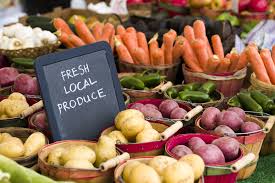 The days of glazing over ingredients when purchasing food are coming to a close. Now, more than ever, health food stores and farm to table restaurants are popping up everywhere, and they are packed with people. Why the change? What spurred this trend to start eating “clean” again? Clean, healthy foods are where we all began cooking. Countries like Italy are still, to this day, leaning towards farmers markets, butcher shops, fish markets and garden eating for every meal. It’s no wonder people rave about the food culture of Italy! 67% of Americans say they want to know everything that goes into their food. Convenience is still a sought after trait, but clean, healthy ingredients are sneaking up as just as important. So what are people looking for when they go out to eat, what are they avoiding, and how many people are really reading labels?
The days of glazing over ingredients when purchasing food are coming to a close. Now, more than ever, health food stores and farm to table restaurants are popping up everywhere, and they are packed with people. Why the change? What spurred this trend to start eating “clean” again? Clean, healthy foods are where we all began cooking. Countries like Italy are still, to this day, leaning towards farmers markets, butcher shops, fish markets and garden eating for every meal. It’s no wonder people rave about the food culture of Italy! 67% of Americans say they want to know everything that goes into their food. Convenience is still a sought after trait, but clean, healthy ingredients are sneaking up as just as important. So what are people looking for when they go out to eat, what are they avoiding, and how many people are really reading labels?
One of the biggest questions of restaurant owners and managers today is: what are the main things people are looking for when dining out? The answer is clean, fresh ingredients. As a society, we are in a way going back in time to the original recipes that our grandparents used to use, and are choosing to avoid heavily processed foods. One of the main things consumers look to avoid when eating healthily is a daunting, long ingredient list. For instance, bread at its most natural form contains only a few ingredients, but Wonder Bread has almost 30 ingredients in a single loaf. These complicated, long labels are intimidating and people are asking, “What am I eating?” Shorter labels with ingredients people recognize are becoming more sought after.
With awareness comes more conscious eaters. People want balanced meals with natural ingredients and they are willing to dish out more cash for them. Diners see clean food as an investment in a healthy life and this makes it easier for restaurants to accommodate and price their menus accordingly. Tiny, all-natural ingredient restaurants are popping up everywhere from New York City to small towns in Colorado. With prices a bit steeper but options for all, the tables are filling up with happy customers. 71% of Americans are concerned with the long-term impact of artificial ingredients to their health. Customers today want to know what they are eating and where it comes from.
High-end restaurants are not the only ones able to accommodate this new trend. There are possibilities for quick-service healthy food items as well. Airports have readily available, pre-packaged salads that fly off the shelves. Quick-service salad bar chains are popping up all over cities for a diner who wants a fast, healthy, affordable lunch, and wants to see what ingredients go into their food. Next time you head out to eat, take a moment to notice healthy offerings. Calorie counts are readily available, healthy symbols are placed next to menu items that are more nutritious, separate menu sections are dedicated to all the “low calorie/ clean food items” and people are loving this trend. Whether you’re a chef, manager, store owner or simply love to go out to eat, take notice of these changes and rest assured that this trend will continue to gain popularity.
Cooked, a new show on Netflix focuses on clean eating and going back to the basics of cooking. The narrator of the show challenges the viewer one thing that is vital to this new movement. He states that if you want to eat brownies, ice cream, pies, an entire bowl of French fries all in one night, go ahead and do it; but challenge yourself to make everything from scratch. If you can make all your guilty pleasures from scratch, then you will know what ingredients they contain, how they were made, and chances are you might only stick to one of these food choices rather than gorging yourself.
Challenge yourself to eat more healthily, ask where your food comes from and make decisions based on clean food rather than convenience. Go back to the days of cooking when your grandmother picked tomatoes from the garden, rinsed off the dirt and placed them directly on the kitchen table to be eaten. This “new trend” is nothing but returning to the basics of cooking in itself. Now is the time for restaurants to get on board and embrace clean food. This will ensure repeat customers, higher quality food, and an opportunity for higher profit.
Sources:
1. Netflix show Cooked
2. QSR “Why 2017 is The Year of The Clean Label”
3. Nielsen What’s in Our Food and On Our Mind: Ingredient and Dining-Out Trends Around the World, August 2016



